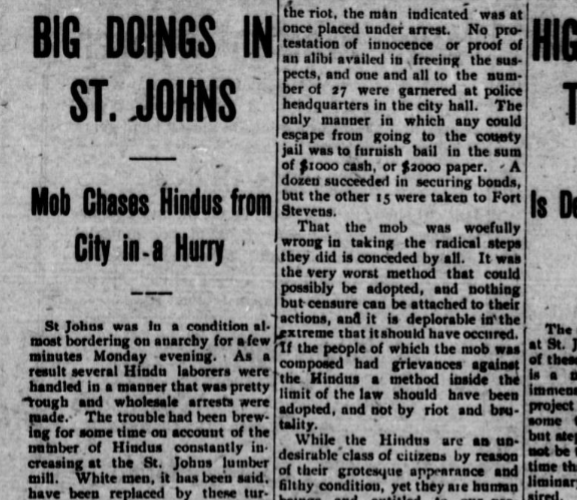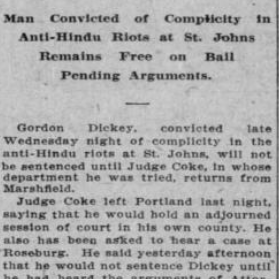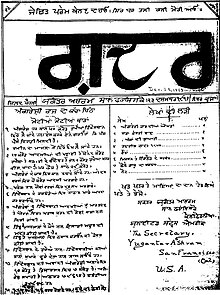The Struggle For Immigrant Rights:
Failures and The Fight for Justice
Rights and Responsibilities in History
National History Day 2025
The Ghadar Movement
In the early 1900s, around 600 East Indians settled along the Columbia River, primarily working in lumber mills and factories. Although most were Sikhs, they were often referred to as 'Hindoos.' They sought refuge from the harsh conditions in colonial India, including the plague, famine, and violence. However, they faced significant racial prejudice, such as violent riots in cities like St. Johns and Astoria. This led to the formation of the Ghadar Party.


Vol. 6, 25 March.'Big Doings in St. Johns' Vol. 14. 17 June. 'Sentence Yet' Courtsey of St. Johns Review (1910) Morning Oregonian (1910)
Hindustan Ghadar
The word ghadar translates to mutity, or revolution, and it indicates the movement's strategy and desire for change. The onset of World War I ignited the aspiration for an armed revolution against British rule; however, their efforts were ultimately unsuccessful. In San Francisco, the core of Ghadar’s newspaper and headquarters, numerous individuals faced arrest or even death. Nevertheless, many observers regard the Ghadar Party as the catalyst for the struggle for Indian independence.
In November 1913, the radical nationalist Ghadar Party convened its inaugural meeting in Astoria. A collection of Punjabi and Bengali laborers, activists, students, and scholars of various religious backgrounds played pivotal roles in organizing this community.
The Hindustan Ghadar was a key publication of the Ghadar movement, produced by Indian expatriates in the early 20th century. Initially written in Punjabi and Urdu, it was later translated into various languages to expand its influence. The newspaper played a crucial role in promoting revolutionary ideas, garnering support for the movement, and subsequently faced increased opposition from both British and U.S. colonial authorities.

Hindustan Ghadar (Punjabi) Vol. 1, No. 22, March 28, 1914